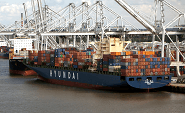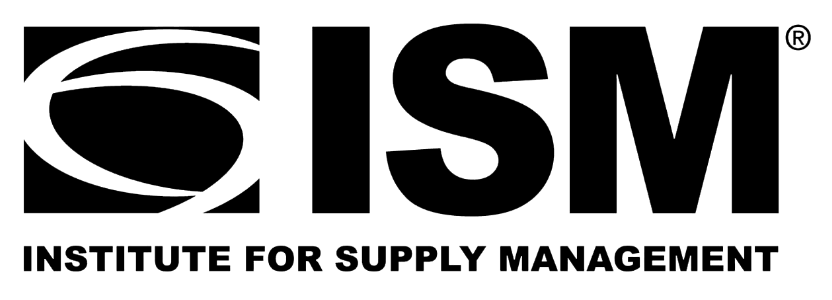Economy
Global Manufacturing Reaches 2 Year High in October
Written by Sandy Williams
November 3, 2016
Accelerating production and new orders raised the JP Morgan Global Manufacturing PMI to 52.0 in October, its highest level in two years.
Manufacturing conditions improved in 22 of the 31 nations surveyed. Those nations that contracted were primarily in Asia (South Korea, Indonesia, Malaysia, Thailand, Singapore and Myanmar), said JP Morgan and IHS Markit, along with Brazil, Turkey and Greece.
New global export orders grew from 50.7 to 51.0 but generally maintained its subdued growth pattern.
Pricing pressure increased at the start of fourth quarter as input costs and selling prices both rose at faster rates. The pace of inflation was generally higher in emerging nations as opposed to developed markets, said JP Morgan.
Commenting on the survey, David Hensley, Director of Global Economic Coordination at JP Morgan, said: “October saw growth of the global manufacturing sector accelerate to a two-year high, as new order inflows strengthened and international trade volumes picked up pace. Firmer demand combined with rising backlogs of work and higher employment all point to this growth rebound being maintained though some cooling can be expected as inventory growth stabilizes.”
The Markit Eurozone Manufacturing PMI rose to a 33-month high in October, gaining nearly one point to register at 53.5. Broad-based growth was seen as production, new orders, new export orders and employment accelerated and rising input costs and selling prices showed signs of further increases. Export orders picked-up at its fastest rate in two-and-a-half years across the Eurozone except in Greece. New job creation and higher employment rates were evident in October. Rates of growth were highest in Germany and the Netherlands.
“The broad base of the growth acceleration signalled by the headline PMI was especially pleasing,” said Rob Dobson, Senior Economist at IHS Markit. Five out of the eight nations covered saw faster expansions during October, including some of the key larger growth engines such as Germany, the Netherlands and Spain. French manufacturing meanwhile grew for the first time in eight months and at the strongest pace in over two-and-a-half years. The only real blot on the copybook was a further contraction in Greece, although a recent switch to tepid expansion in Italy should also be watched closely.”
Manufacturing in the United Kingdom saw a solid rate of expansion in October. The Markit/CIPS PMI was 54.3, down slightly from 55.5 in September and above its average of 51.1. New orders increased for the third month in a row from both domestic and export clients. The depreciation of the sterling exchange rate aided new export business but drove up import costs. Employment rates increased for the third month on higher production and demand. Purchase price inflation was at a 69-month peak with higher costs for energy and metals noted. Average selling prices rose as manufactures passed on higher input costs to clients.
The Markit Russia Manufacturing PMI rose to a four year high of 52.4 in October from 51.1 in September. Production grew at its fastest rate in 67 months along with new orders rising at their quickest pace in years. Orders were restricted to the domestic market as export orders continued to decline. Finished goods inventories continued their two-and-a-half year downward trend. Backlogs increased modestly. Input costs and selling prices rose with output charges easing somewhat in October. Employment declined for the fourth month. The October PMI “was indicative of a solid improvement in operating conditions and a clear sign that the sector may finally be making a sustainable recovery,” said Samuel Agass, Economist at IHS Markit.
China manufacturing showed improvement in October as output and new domestic orders rebounded. The composite PMI rose to 51.2 from 50.1 in September as output increase at the fastest rate since early 2011. Stocks of finished goods increased only slightly as current inventories were used to meet orders. New export orders fell slightly during the month. Commenting on the October data, Dr. Zhengsheng Zhong, Director of Macroeconomic Analysis at CEBM Group said, “The economy seems to be stabilizing for the moment, owing primarily to policies implemented to sustain growth. Supportive policies must be continued, or industrial output may be dragged down by slow investment.”
Manufacturing in Japan saw a jump in new orders for the first time since January due to stronger international demand. A sharp increase in production led to hiring of additional workers. Input prices and charges declined at a weaker rate in October. The PMI rose to a nine month high at 51.4, up from 50.4 in September.
Brazil’s manufacturing industry remained well into contraction for the 21st month with the PMI at 46.3 up from 46.0 in September. The Central Bank lowered the benchmark rate for the first time in four years which is hoped to encourage investment in the manufacturing sector. Further reductions to the rate will likely be needed, said IHS Markit.
Manufacturing expanded in Canada pushing the PMI to 51.1 from September’s seven-month low of 50.3. Production was flat during the month as inventories were reduced and client demand weakened. New product launches and promotional discounting gave a slight boost to new business volume. The energy sector continued to be drag on demand and export sales were broadly unchanged during the month after marginal declines throughout Q3. Cost inflation was higher due to increased raw material prices; however, factory gate charges fell for the second month and was attributed to intense competition for new work.
Mexico saw production volumes expand for the second month on the strength of new orders and an effort to reduce backlogs. Order levels expansion in October was at a softer pace than in September. Export sales increased at the fastest rate since March. The Markit Mexico Manufacturing PMI was nearly unchanged at 51.8 in October from 51.9 in September. Higher prices for raw material contributed to input cost inflation while factory gate prices also accelerated. The latest survey was seen as an indicator of a sustained upturn in manufacturing output. “Survey respondents noted that improving underlying demand from U.S. clients, alongside a supportive exchange rate, had helped to lift new export order growth. The latest rise in new work from abroad was the fastest for seven months, which partly offset subdued domestic demand patterns,” said Tim Moore, senior economist at IHS Markit.
In the U.S. output a boost in production and new orders indicated an improvement in operating conditions for manufacturers. The Markit U.S. Manufacturing PMI rose to 53.4 from 51.5 to the highest recorded by the survey in 12 months. Domestic demand drove most of the new orders but new exports did expand modestly. Backlogs increased due to pressure from rising production. Employment levels, as a result, increased for the fortieth month but at pace slightly less than September. Anecdotal reports indicate manufacturers are being cautious about investing in capacity until after the presidential election. Input costs increased for the seventh month and were passed to clients in output charges.

Sandy Williams
Read more from Sandy WilliamsLatest in Economy

New York state manufacturing index drops again in April
Firms were pessimistic, with the future general business conditions index falling to its second lowest reading in the more than 20-year history of the survey

Construction adds 13,000 jobs in March
The construction sector added 13,000 jobs, seasonally adjusted, in March, but tariffs could undermine the industry.

Supply chains, end-users brace for impact from tariffs
Supply chains are working through what the tariffs mean for them

ISM: Manufacturing expansion loses steam after two months of growth
US manufacturing activity slowed in March after two straight months of expansion, according to supply executives contributing to the Institute for Supply Management (ISM)’s latest report.

Chicago Business Barometer rose to 16-month high in March
The Chicago Business Barometer increased for the third-consecutive month in March. Despite this, it still reflects contracting business conditions, as it has since December 2023.
